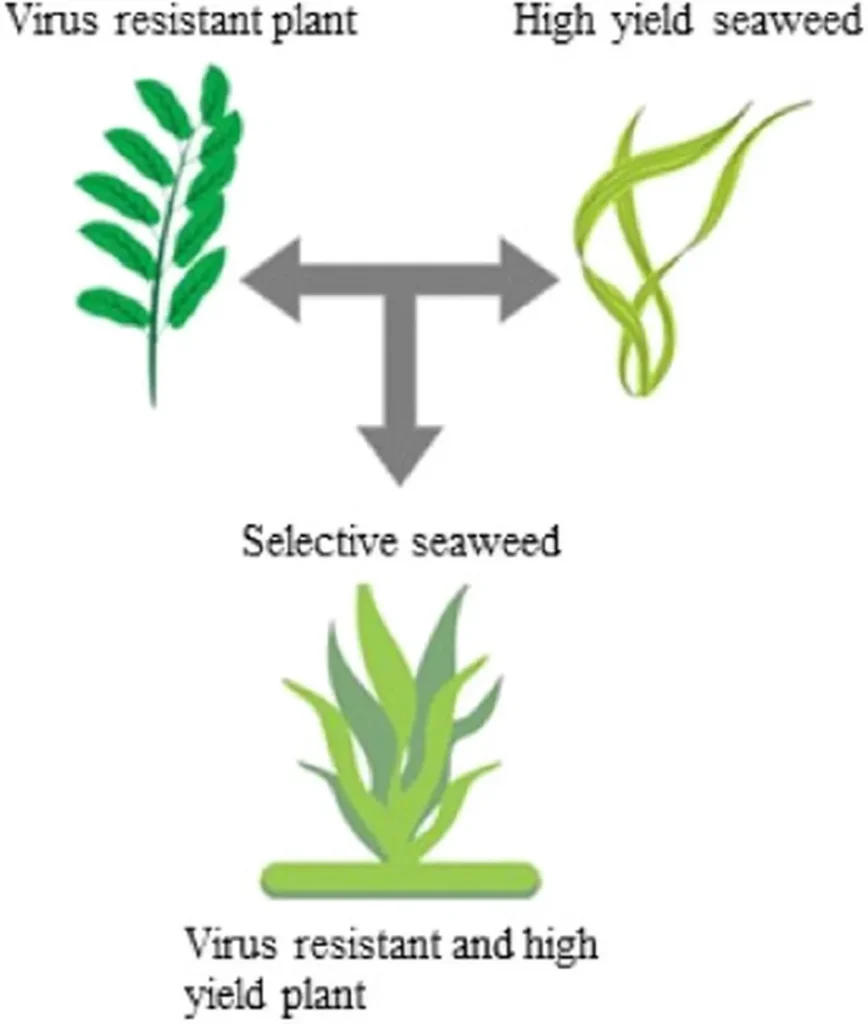In the quest to bolster food security and mitigate the impacts of climate change, researchers have turned to an innovative fusion of nanotechnology and marine biology, yielding promising results for the agricultural sector. A recent study published in *Frontiers in Plant Science* (translated to *Frontiers in Plant Science* in English) introduces a novel approach to enhancing seed germination and seedling growth through the use of layered double hydroxide-seaweed composites. This breakthrough research, led by Adrian Alejandro Espinosa-Antón of the Doctorado en Cs. en Biosistemática, Ecología y Manejo de Recursos Naturales y Agrícolas at the Universidad de Guadalajara, offers a glimpse into the future of sustainable agriculture.
The study focuses on the integration of layered double hydroxides (LDHs), known for their versatile properties as slow-release and efficient carriers, with alkaline extracts from two types of seaweed: the brown seaweed *Sargassum liebmannii* and the green seaweed *Ulva ohnoi*. This combination results in nanostructured composites that have shown significant potential in promoting plant growth and development.
“Our research demonstrates that these composites can enhance seed germination and seedling growth at lower concentrations, which is a crucial finding for sustainable agriculture,” Espinosa-Antón explained. The composites were synthesized and their physicochemical properties were thoroughly characterized using a range of advanced techniques, including X-ray diffraction, thermogravimetric analysis, and scanning electron microscopy.
The biological efficacy of the composites was evaluated through seed germination and early seedling development assays in tomato plants and root induction assays in mung bean cuttings. The results were striking: both LDH-Sargassum and LDH-Ulva composites significantly improved germination and seedling growth at lower concentrations, while higher doses produced effects comparable to or slightly better than the control. Notably, the composites enhanced root architecture in mung bean cuttings by increasing root number, length, and dry weight.
“This study highlights the potential of LDH-seaweed composites as effective biostimulants, particularly in promoting early-stage root development,” Espinosa-Antón added. The findings suggest that these composites could serve as natural alternatives to synthetic root-promoting agents, offering a more sustainable and eco-friendly solution for agricultural producers.
The implications of this research extend beyond the immediate benefits to plant growth. By reducing the need for synthetic agrochemicals, these composites could contribute to a more sustainable and environmentally friendly approach to agriculture. This aligns with the growing global demand for food security and the urgent need to address the adverse effects of climate change.
As the world grapples with the challenges of feeding a growing population while minimizing environmental impact, innovations like these offer a ray of hope. The study provides a foundation for implementing LDH-seaweed composites as a sustainable strategy to reduce agrochemical inputs and advance towards food security through bio-based nanotechnologies.
The research not only opens new avenues for agricultural biostimulants but also paves the way for further exploration of nanostructured composites in other areas of plant science. The potential for these composites to enhance crop yields and improve plant health could have far-reaching implications for the agricultural industry, ultimately contributing to a more sustainable and secure food supply.
In the words of Espinosa-Antón, “This is just the beginning. The possibilities are vast, and we are excited to see how this research will shape the future of agriculture.” As the scientific community continues to delve into the potential of bio-based nanotechnologies, the integration of LDH-seaweed composites may well become a cornerstone of sustainable agricultural practices.

